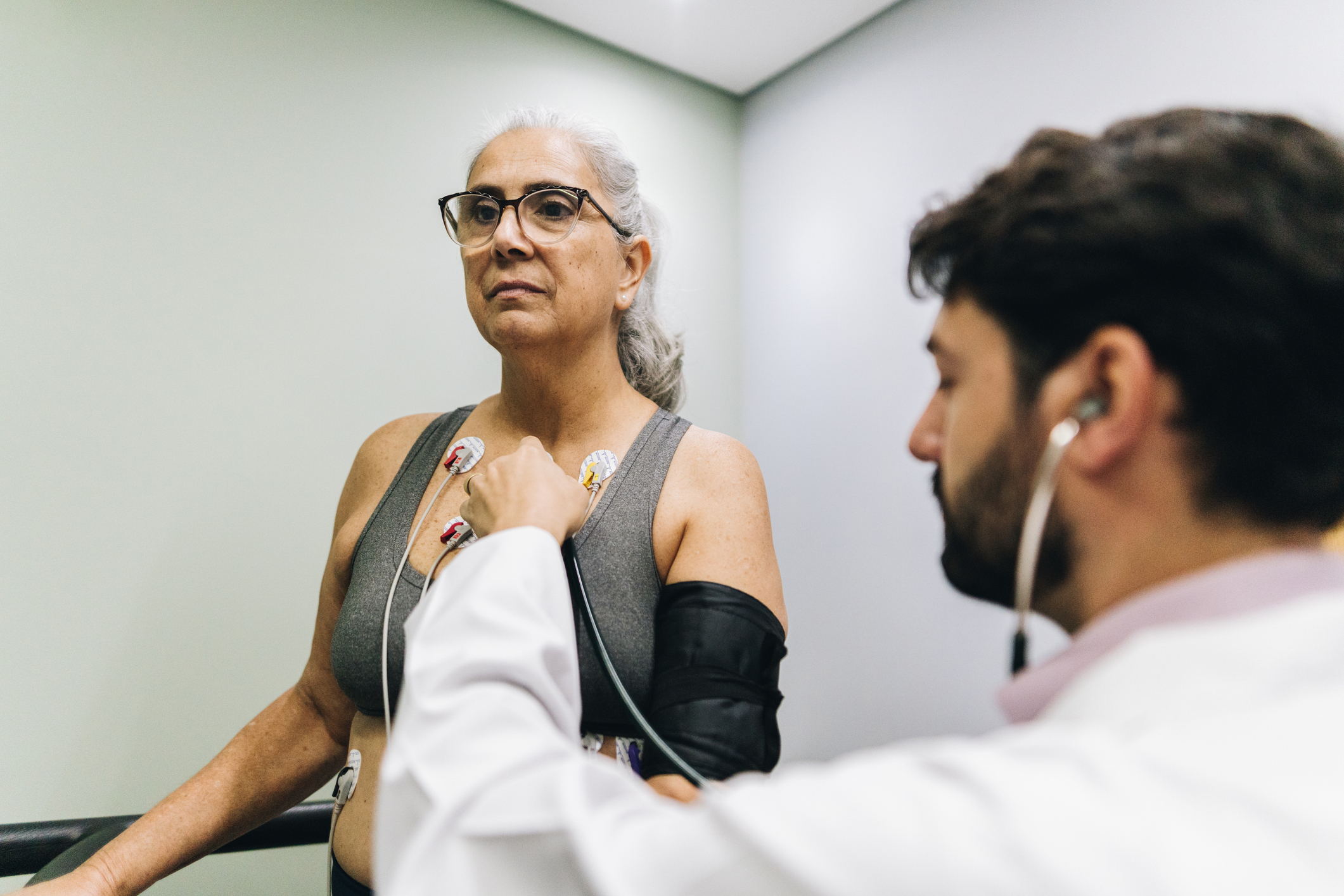Several international guidelines and position statements have recommended that exercise should be embedded as standard practice in cancer care. The main argument for this has been symptom control, in particular for fatigue. Exercise during or after cancer treatment also improves quality of life, physical and role functioning, and reduces anxiety and depression. Following the 2018 ACSM Roundtable on Exercise and Cancer Prevention and Control, updated exercise guidelines for people living with or beyond cancer were issued. Simultaneously, practical recommendations were made regarding the implementation of exercise in clinical cancer care. Despite these and ongoing efforts, exercise is still not always addressed, and patients are not always referred.
An often-heard reason for non-referral is the notion that a patient is too physically unfit to join an exercise program during chemotherapy. However, poor physical functioning also leads to the postponement, alteration or premature cessation of chemotherapy treatment. Such deviations from the chemotherapy regimen may have detrimental consequences for treatment efficacy. In breast cancer in particular, there are survival implications if the relative dose intensity (RDI) drops below 85%.
In our study, published in the April 2022 issue of Medicine & Science in Sports & Exercise®, we examined the relationship between physical fitness at the start of chemotherapy and chemotherapy completion rates in women with breast cancer. We reanalyzed the combined raw data of two previously conducted randomized controlled trials on exercise during chemotherapy for breast cancer. The PACES study compared two exercise interventions: The first was a low-moderate intensity, self-directed, home-based program with nurse support. The second was a moderate-high intensity, combined aerobic and resistance exercise program supervised by a physical therapist. The latter study, the PACT study, had one exercise arm, similar to the moderate-high arm in PACES. Both studies used a non-exercise control group.
We found that overall, patients with lower physical fitness at baseline had much lower odds of attaining 85% RDI, compared to fitter patients. We did not observe this association in the subgroup of patients who followed a moderate-high intensity exercise program during their chemotherapy, while the association was two times as strong in those who did not exercise during their chemotherapy.
It is understandable that patients who are not fit are reluctant to join an exercise program, or even discuss exercise during their medical appointments. It is also, to a certain extent, understandable that health care professionals may have doubts about referring physically unfit patients to exercise during toxic treatments. This is why it is important to recognize our finding that, in fact, these patients have the most to gain from being referred to exercise programs under the supervision of qualified professionals. In clinical practice, we have seen numerous examples of low-fit patients suffering from fatigue and nausea due to the chemotherapy who surprised themselves and their caretakers with their ability to exercise. We have observed again and again how exercising helps these patients remain resilient during cancer treatment. Scientific studies, including this one, have repeatedly confirmed such clinical observations.
Summarizing, our study underscores that while there is little to lose, there is much to gain by exercising during breast cancer treatment — also, or maybe especially, when one is not physically fit. Future studies will have to shed more light on which mechanisms drive these benefits. This will allow us to further optimize exercise prescription for people with cancer.

Martijn M. Stuiver, PT, PhD., is a clinical epidemiologist at the Netherlands Cancer Institute, Center for Quality of Life and Division of Psychosocial Oncology and Epidemiology. He holds a chair as lector at the Amsterdam University of Applied Sciences Faculty of Health and is vice principal of the master’s program Evidence Based Practice in Health Care at the Faculty of Medicine, University of Amsterdam. He has a background in physical therapy and over 20 years of clinical experience in cancer care. His research focuses on functional recovery from cancer and its treatment, and in particular the role of exercise.

Anne M. May, PhD, is a professor in clinical epidemiology of cancer survivorship and the head of the Department of Epidemiology at the Julius Center, University Medical Center Utrecht, the Netherlands. She has been involved in exercise-oncology research for almost 20 years and has performed several multicenter randomized controlled trials showing positive effects of exercise on treatment-related side effects in patients with, amongst others, breast, colon or esophageal cancer. Currently, she is leading the international PREFERABLE consortium investigating effects of exercise in patients with metastatic breast cancer in Europe and Australia.
Viewpoints presented in SMB commentaries reflect opinions of the authors and do not necessarily represent positions or policies of ACSM. Active Voice authors who have received financial or other considerations from a commercial entity associated with their topic must disclose such relationships at the time they accept an invitation to write for SMB.




